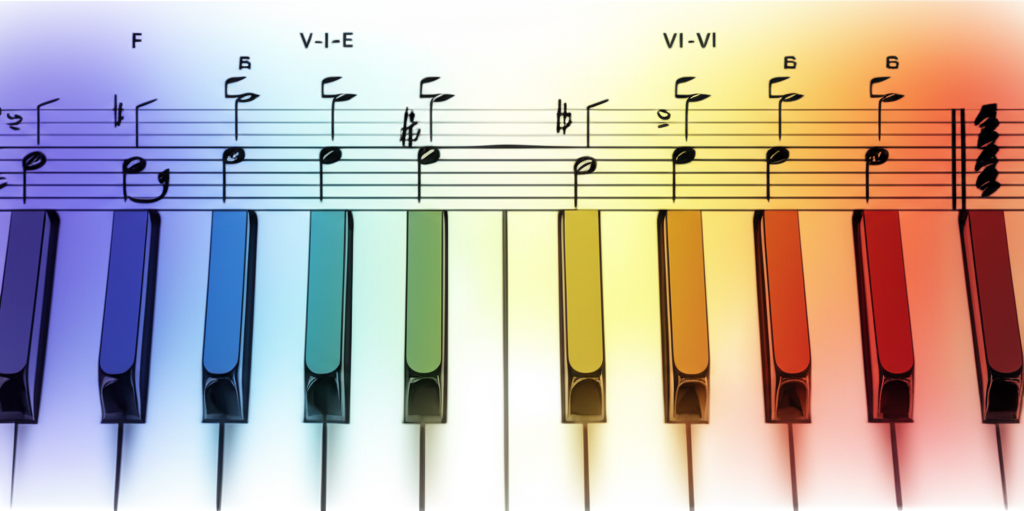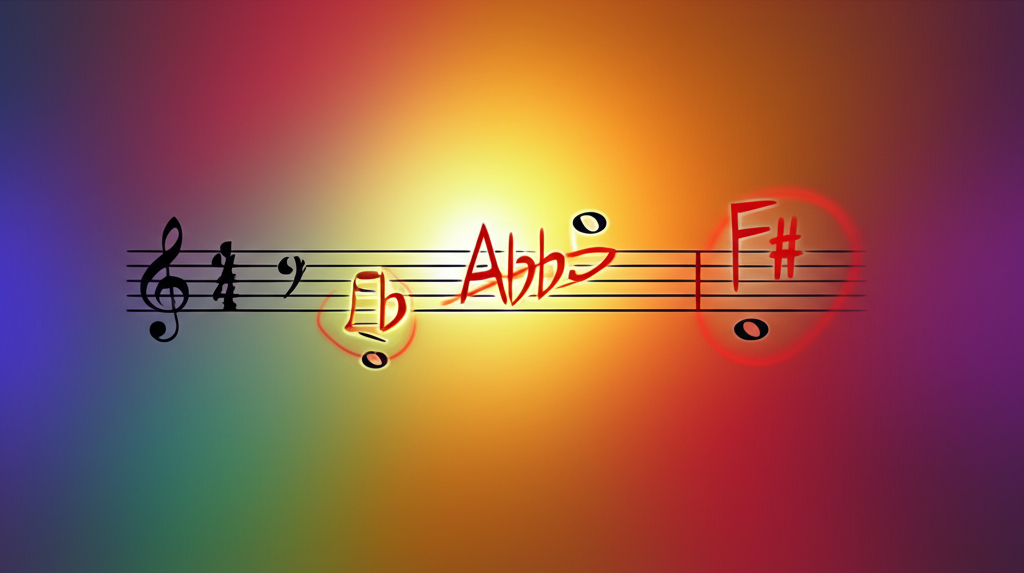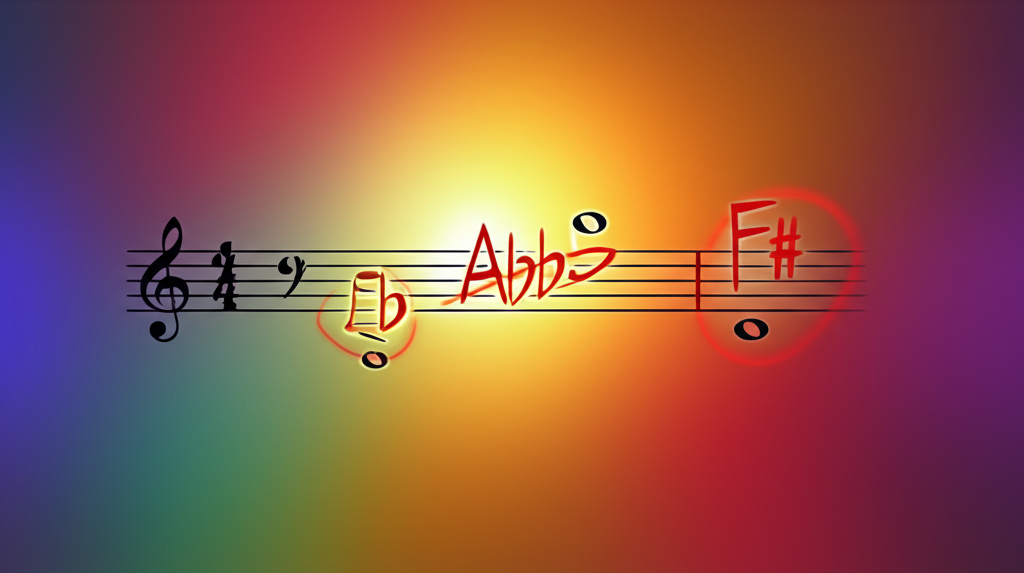Articles tagged with: "classical"

The Major Scale: The Foundation of Western Music
The major scale is the most fundamental scale in Western music. It's a seven-note diatonic scale that forms the basis for countless melodies, harmonies, and musical compositions across all genres....

The 6/9 Chord: A Comprehensive Guide for Musicians
The 6/9 chord is a beautiful and versatile extended chord that adds color and richness to music. It is commonly used in jazz, pop, and classical music to create a …

Mastering the Octatonic Scale: Symmetry, Tension, and Modern Harmony
The octatonic scale, also known as the diminished scale, is one of the most fascinating and versatile symmetrical scales in music theory. This eight-note scale alternates between whole and half …

The Andalusian Cadence (Am-G-F-E): A Complete Guide to This Iconic Progression
The Andalusian Cadence is a descending chord progression typically written as Am-G-F-E in modern notation. This four-chord sequence creates a distinctive melancholic yet powerful sound that has been...

The Melodic Minor Scale: A Versatile Tool for Musicians
The melodic minor scale is a fascinating and versatile musical scale with a dual identity. Classically, it solves a melodic problem in minor keys by raising the 6th and 7th …

The Neapolitan Major Scale: A Comprehensive Guide for Musicians
The Neapolitan Major scale is a fascinating and somewhat exotic scale that offers a unique sound palette for composers and improvisers. This scale, also known as the Lydian Dominant scale, …

The Complete Musician's Guide to the Locrian Mode
The Locrian mode is the seventh and final mode of the major scale, known for its dark, unstable, and tense sound. This mode is unique because it features a diminished …

The Tritone: Understanding the Devil's Interval in Music
A tritone is a musical interval that spans three whole tones, hence the name 'tritone'. It is also known as an augmented fourth (A4) or diminished fifth (d5), depending on …

The Harmonic Minor Scale: A Guide to Its Mystery and Tension
The harmonic minor scale is a crucial variation of the natural minor scale, defined by its raised seventh degree. This single alteration creates a distinctive augmented second interval, giving the...

Mastering the Natural Minor Scale: The Complete Beginner's Guide
This article explores mastering the natural minor scale: the complete beginner's guide, covering its fundamental concepts, practical applications, and musical examples.

The Tritone: Mastering the Devil's Interval in Music
The tritone is one of the most fascinating and controversial intervals in music theory. Spanning three whole tones (hence the name "tritone"), this interval has been called the "devil's interval" …

Mastering the Minor 11th Chord: Theory and Application
The Minor 11th chord is a rich and complex extended chord that adds depth and color to musical compositions. This guide will explore its construction, historical context, and practical applications...

Mastering the Neapolitan Minor Scale: Theory and Practice
This article explores mastering the neapolitan minor scale: theory and practice, covering its fundamental concepts, practical applications, and musical examples.

Mastering the Half Diminished Chord: Construction, Applications, and Exercises
A half diminished chord, also known as a minor seventh flat five (m7♭5), is a four-note chord consisting of:

Perfect Unison: The Fundamental Building Block of Music
The perfect unison is the most fundamental interval in music theory. It occurs when two notes of the same pitch are played simultaneously. This interval serves as the building block …

Mastering Diminished Modulation: A Powerful Harmonic Technique
Modulation—the art of moving between keys—is one of music's most thrilling expressive devices. Among various modulation techniques, diminished modulation stands out for its dramatic intensity and...

Mastering the Perfect Eleventh: A Complete Music Theory Guide
A Perfect Eleventh is a compound interval spanning an octave plus a perfect fourth. In simpler terms, it's the distance from a root note to the note eleven scale degrees …
Perfect Unison Explained: The Fundamental Interval Every Musician Should Master
This article explores perfect unison explained: the fundamental interval every musician should master, covering its fundamental concepts, practical applications, and musical examples.

Mastering the Minor Thirteenth: A Complete Guide to This Expressive Interval
A minor thirteenth is a compound interval that spans a minor thirteenth above a root note. It consists of a minor tenth (an octave plus a minor third) plus a …

The Perfect Octave: A Fundamental Interval in Music
The perfect octave is one of the most fundamental intervals in music theory. It is the distance between two notes where the higher note has exactly double the frequency of …

Secondary Dominants: Adding Color and Direction to Chord Progressions
Secondary dominants are one of the most powerful tools in functional harmony, used to add color, tension, and forward momentum to chord progressions. By temporarily "tonicizing" chords other than the...
Mastering the Minor Thirteenth: The Complete Guide to This Colorful Interval
The minor thirteenth is a compound interval that spans 20 semitones above the root note, combining an octave plus a minor sixth. In chord construction, it typically appears as an …